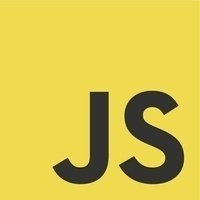What is Citus and what are its top alternatives?
Top Alternatives to Citus
 TimescaleDB
TimescaleDBTimescaleDB: An open-source database built for analyzing time-series data with the power and convenience of SQL — on premise, at the edge, or in the cloud. ...
 CockroachDB
CockroachDBCockroachDB is distributed SQL database that can be deployed in serverless, dedicated, or on-prem. Elastic scale, multi-active availability for resilience, and low latency performance. ...
 Apache Aurora
Apache AuroraApache Aurora is a service scheduler that runs on top of Mesos, enabling you to run long-running services that take advantage of Mesos' scalability, fault-tolerance, and resource isolation. ...
 Cassandra
CassandraPartitioning means that Cassandra can distribute your data across multiple machines in an application-transparent matter. Cassandra will automatically repartition as machines are added and removed from the cluster. Row store means that like relational databases, Cassandra organizes data by rows and columns. The Cassandra Query Language (CQL) is a close relative of SQL. ...
 Vitess
VitessIt is a database solution for deploying, scaling and managing large clusters of MySQL instances. It’s architected to run as effectively in a public or private cloud architecture as it does on dedicated hardware. It combines and extends many important MySQL features with the scalability of a NoSQL database. ...
 Clickhouse
ClickhouseIt allows analysis of data that is updated in real time. It offers instant results in most cases: the data is processed faster than it takes to create a query. ...
 MySQL
MySQLThe MySQL software delivers a very fast, multi-threaded, multi-user, and robust SQL (Structured Query Language) database server. MySQL Server is intended for mission-critical, heavy-load production systems as well as for embedding into mass-deployed software. ...
 PostgreSQL
PostgreSQLPostgreSQL is an advanced object-relational database management system that supports an extended subset of the SQL standard, including transactions, foreign keys, subqueries, triggers, user-defined types and functions. ...
Citus alternatives & related posts
TimescaleDB
- Open source9
- Easy Query Language8
- Time-series data analysis7
- Established postgresql API and support5
- Reliable4
- Paid support for automatic Retention Policy2
- Chunk-based compression2
- Postgres integration2
- High-performance2
- Fast and scalable2
- Case studies1
- Licensing issues when running on managed databases5
related TimescaleDB posts
As we've evolved or added additional infrastructure to our stack, we've biased towards managed services. Most new backing stores are Amazon RDS instances now. We do use self-managed PostgreSQL with TimescaleDB for time-series data—this is made HA with the use of Patroni and Consul.
We also use managed Amazon ElastiCache instances instead of spinning up Amazon EC2 instances to run Redis workloads, as well as shifting to Amazon Kinesis instead of Kafka.
Hi, I need advice on which Database tool to use in the following scenario:
I work with Cesium, and I need to save and load CZML snapshot and update objects for a recording program that saves files containing several entities (along with the time of the snapshot or update). I need to be able to easily load the files according to the corresponding timeline point (for example, if the update was recorded at 13:15, I should be able to easily load the update file when I click on the 13:15 point on the timeline). I should also be able to make geo-queries relatively easily.
I am currently thinking about Elasticsearch or PostgreSQL, but I am open to suggestions. I tried looking into Time Series Databases like TimescaleDB but found that it is unnecessarily powerful than my needs since the update time is a simple variable.
Thanks for your advice in advance!
CockroachDB
related CockroachDB posts
related Apache Aurora posts
Docker containers on Mesos run their microservices with consistent configurations at scale, along with Aurora for long-running services and cron jobs.
Cassandra
- Distributed119
- High performance98
- High availability81
- Easy scalability74
- Replication53
- Reliable26
- Multi datacenter deployments26
- Schema optional10
- OLTP9
- Open source8
- Workload separation (via MDC)2
- Fast1
- Reliability of replication3
- Size1
- Updates1
related Cassandra posts
1.0 of Stream leveraged Cassandra for storing the feed. Cassandra is a common choice for building feeds. Instagram, for instance started, out with Redis but eventually switched to Cassandra to handle their rapid usage growth. Cassandra can handle write heavy workloads very efficiently.
Cassandra is a great tool that allows you to scale write capacity simply by adding more nodes, though it is also very complex. This complexity made it hard to diagnose performance fluctuations. Even though we had years of experience with running Cassandra, it still felt like a bit of a black box. When building Stream 2.0 we decided to go for a different approach and build Keevo. Keevo is our in-house key-value store built upon RocksDB, gRPC and Raft.
RocksDB is a highly performant embeddable database library developed and maintained by Facebook’s data engineering team. RocksDB started as a fork of Google’s LevelDB that introduced several performance improvements for SSD. Nowadays RocksDB is a project on its own and is under active development. It is written in C++ and it’s fast. Have a look at how this benchmark handles 7 million QPS. In terms of technology it’s much more simple than Cassandra.
This translates into reduced maintenance overhead, improved performance and, most importantly, more consistent performance. It’s interesting to note that LinkedIn also uses RocksDB for their feed.
#InMemoryDatabases #DataStores #Databases
Trying to establish a data lake(or maybe puddle) for my org's Data Sharing project. The idea is that outside partners would send cuts of their PHI data, regardless of format/variables/systems, to our Data Team who would then harmonize the data, create data marts, and eventually use it for something. End-to-end, I'm envisioning:
- Ingestion->Secure, role-based, self service portal for users to upload data (1a. bonus points if it can preform basic validations/masking)
- Storage->Amazon S3 seems like the cheapest. We probably won't need very big, even at full capacity. Our current storage is a secure Box folder that has ~4GB with several batches of test data, code, presentations, and planning docs.
- Data Catalog-> AWS Glue? Azure Data Factory? Snowplow? is the main difference basically based on the vendor? We also will have Data Dictionaries/Codebooks from submitters. Where would they fit in?
- Partitions-> I've seen Cassandra and YARN mentioned, but have no experience with either
- Processing-> We want to use SAS if at all possible. What will work with SAS code?
- Pipeline/Automation->The check-in and verification processes that have been outlined are rather involved. Some sort of automated messaging or approval workflow would be nice
- I have very little guidance on what a "Data Mart" should look like, so I'm going with the idea that it would be another "experimental" partition. Unless there's an actual mart-building paradigm I've missed?
- An end user might use the catalog to pull certain de-identified data sets from the marts. Again, role-based access and self-service gui would be preferable. I'm the only full-time tech person on this project, but I'm mostly an OOP, HTML, JavaScript, and some SQL programmer. Most of this is out of my repertoire. I've done a lot of research, but I can't be an effective evangelist without hands-on experience. Since we're starting a new year of our grant, they've finally decided to let me try some stuff out. Any pointers would be appreciated!
related Vitess posts
They're critical to the business data and operated by an ecosystem of tools. But once the tools have been used, it was important to verify that the data remains as expected at all times. Even with the best efforts to prevent errors, inconsistencies are bound to creep at any stage. In order to test the code in a comprehensive manner, Slack developed a structure known as a consistency check framework.
This is a responsive and personalized framework that can meaningfully analyze and report on your data with a number of proactive and reactive benefits. This framework is important because it can help with repair and recovery from an outage or bug, it can help ensure effective data migration through scripts that test the code post-migration, and find bugs throughout the database. This framework helped prevent duplication and identifies the canonical code in each case, running as reusable code.
The framework was created by creating generic versions of the scanning and reporting code and an interface for the checking code. The checks could be run from the command line and either a single team could be scanned or the whole system. The process was improved over time to further customize the checks and make them more specific. In order to make this framework accessible to everyone, a GUI was added and connected to the internal administrative system. The framework was also modified to include code that can fix certain problems, while others are left for manual intervention. For Slack, such a tool proved extremely beneficial in ensuring data integrity both internally and externally.
- Fast, very very fast21
- Good compression ratio11
- Horizontally scalable7
- Utilizes all CPU resources6
- RESTful5
- Open-source5
- Great CLI5
- Great number of SQL functions4
- Buggy4
- Server crashes its normal :(3
- Highly available3
- Flexible connection options3
- Has no transactions3
- ODBC2
- Flexible compression options2
- In IDEA data import via HTTP interface not working1
- Slow insert operations5
related Clickhouse posts
- Sql800
- Free679
- Easy562
- Widely used528
- Open source490
- High availability180
- Cross-platform support160
- Great community104
- Secure79
- Full-text indexing and searching75
- Fast, open, available26
- Reliable16
- SSL support16
- Robust15
- Enterprise Version9
- Easy to set up on all platforms7
- NoSQL access to JSON data type3
- Relational database1
- Easy, light, scalable1
- Sequel Pro (best SQL GUI)1
- Replica Support1
- Owned by a company with their own agenda16
- Can't roll back schema changes3
related MySQL posts
When I joined NYT there was already broad dissatisfaction with the LAMP (Linux Apache HTTP Server MySQL PHP) Stack and the front end framework, in particular. So, I wasn't passing judgment on it. I mean, LAMP's fine, you can do good work in LAMP. It's a little dated at this point, but it's not ... I didn't want to rip it out for its own sake, but everyone else was like, "We don't like this, it's really inflexible." And I remember from being outside the company when that was called MIT FIVE when it had launched. And been observing it from the outside, and I was like, you guys took so long to do that and you did it so carefully, and yet you're not happy with your decisions. Why is that? That was more the impetus. If we're going to do this again, how are we going to do it in a way that we're gonna get a better result?
So we're moving quickly away from LAMP, I would say. So, right now, the new front end is React based and using Apollo. And we've been in a long, protracted, gradual rollout of the core experiences.
React is now talking to GraphQL as a primary API. There's a Node.js back end, to the front end, which is mainly for server-side rendering, as well.
Behind there, the main repository for the GraphQL server is a big table repository, that we call Bodega because it's a convenience store. And that reads off of a Kafka pipeline.
Hello, I am building a website for a school that's used by students to find Zoom meeting links, view their marks, and check course materials. It is also used by the teachers to put the meeting links, students' marks, and course materials.
I created a similar website using HTML, CSS, PHP, and MySQL. Now I want to implement this project using some frameworks: Next.js, ExpressJS and use PostgreSQL instead of MYSQL
I want to have some advice on whether these are enough to implement my project.
- Relational database764
- High availability510
- Enterprise class database439
- Sql383
- Sql + nosql304
- Great community173
- Easy to setup147
- Heroku131
- Secure by default130
- Postgis113
- Supports Key-Value50
- Great JSON support48
- Cross platform34
- Extensible33
- Replication28
- Triggers26
- Multiversion concurrency control23
- Rollback23
- Open source21
- Heroku Add-on18
- Stable, Simple and Good Performance17
- Powerful15
- Lets be serious, what other SQL DB would you go for?13
- Good documentation11
- Scalable9
- Reliable8
- Intelligent optimizer8
- Free8
- Transactional DDL7
- Modern7
- One stop solution for all things sql no matter the os6
- Relational database with MVCC5
- Faster Development5
- Full-Text Search4
- Developer friendly4
- Open-source3
- search3
- Great DB for Transactional system or Application3
- Free version3
- Excellent source code3
- Relational datanbase3
- Text2
- Full-text2
- Can handle up to petabytes worth of size1
- Multiple procedural languages supported1
- Composability1
- Native0
- Table/index bloatings10
related PostgreSQL posts
Hello, I am building a website for a school that's used by students to find Zoom meeting links, view their marks, and check course materials. It is also used by the teachers to put the meeting links, students' marks, and course materials.
I created a similar website using HTML, CSS, PHP, and MySQL. Now I want to implement this project using some frameworks: Next.js, ExpressJS and use PostgreSQL instead of MYSQL
I want to have some advice on whether these are enough to implement my project.
Our whole DevOps stack consists of the following tools:
- GitHub (incl. GitHub Pages/Markdown for Documentation, GettingStarted and HowTo's) for collaborative review and code management tool
- Respectively Git as revision control system
- SourceTree as Git GUI
- Visual Studio Code as IDE
- CircleCI for continuous integration (automatize development process)
- Prettier / TSLint / ESLint as code linter
- SonarQube as quality gate
- Docker as container management (incl. Docker Compose for multi-container application management)
- VirtualBox for operating system simulation tests
- Kubernetes as cluster management for docker containers
- Heroku for deploying in test environments
- nginx as web server (preferably used as facade server in production environment)
- SSLMate (using OpenSSL) for certificate management
- Amazon EC2 (incl. Amazon S3) for deploying in stage (production-like) and production environments
- PostgreSQL as preferred database system
- Redis as preferred in-memory database/store (great for caching)
The main reason we have chosen Kubernetes over Docker Swarm is related to the following artifacts:
- Key features: Easy and flexible installation, Clear dashboard, Great scaling operations, Monitoring is an integral part, Great load balancing concepts, Monitors the condition and ensures compensation in the event of failure.
- Applications: An application can be deployed using a combination of pods, deployments, and services (or micro-services).
- Functionality: Kubernetes as a complex installation and setup process, but it not as limited as Docker Swarm.
- Monitoring: It supports multiple versions of logging and monitoring when the services are deployed within the cluster (Elasticsearch/Kibana (ELK), Heapster/Grafana, Sysdig cloud integration).
- Scalability: All-in-one framework for distributed systems.
- Other Benefits: Kubernetes is backed by the Cloud Native Computing Foundation (CNCF), huge community among container orchestration tools, it is an open source and modular tool that works with any OS.





























